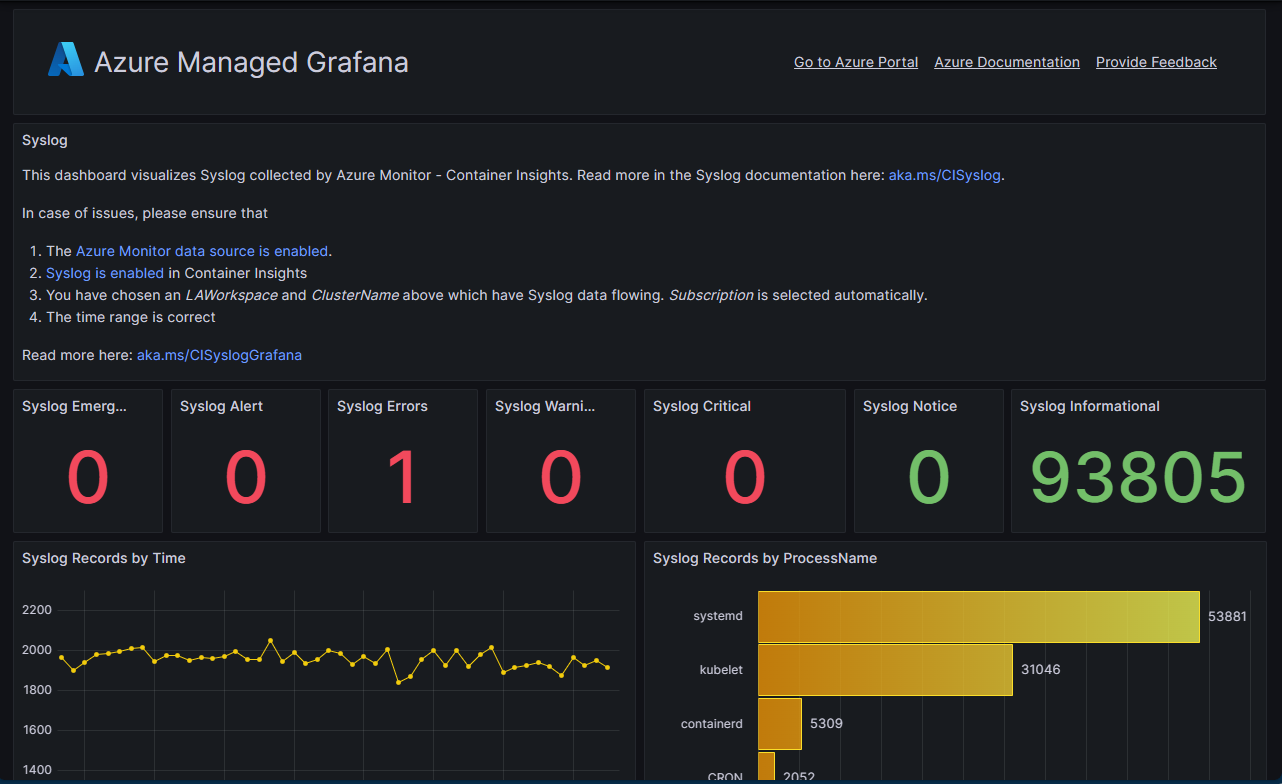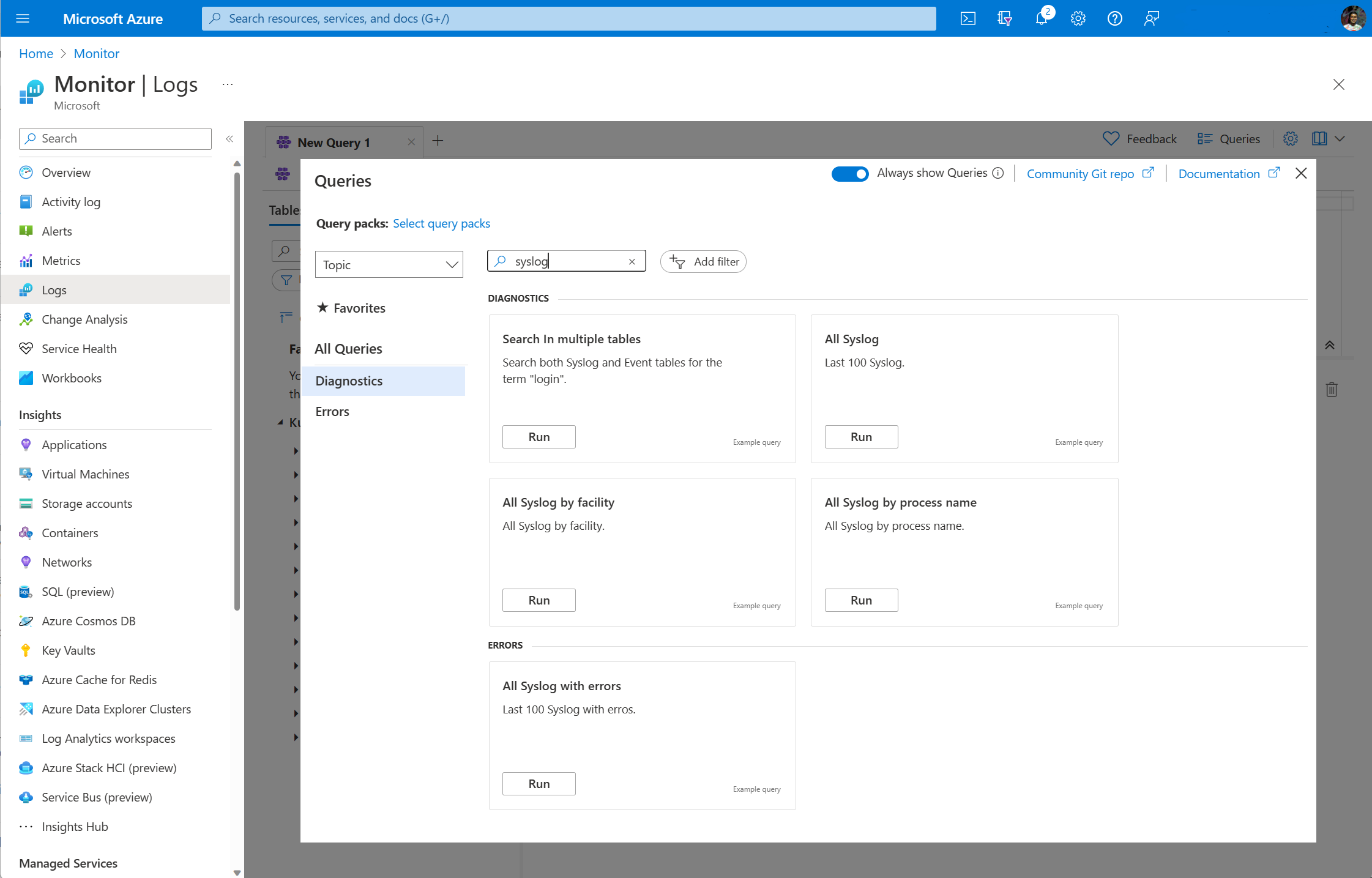Note
Access to this page requires authorization. You can try signing in or changing directories.
Access to this page requires authorization. You can try changing directories.
Log collection for your Kubernetes cluster in Azure Monitor includes the option to collect Syslog events from Linux nodes. This may include logs from control plane components like kubelet or security and health events that may be ingested into a SIEM system like Microsoft Sentinel.
Prerequisites
- Syslog collection needs to be enabled in the logging profile for your cluster.
- Port 28330 should be available on the host node.
- Ensure hostPort functionality is enabled in the cluster. For example, Cilium Enterprise does not have hostPort functionality enabled by default and prevents the syslog feature from working.
- Target cluster should be an Azure Kubernetes Service (AKS) cluster. Arc and other cluster types are not supported.
Syslog workbook
To get a quick snapshot of your syslog data, open the built-in Syslog workbook from the Workbooks item in the menu for your cluster.
Grafana dashboard
There is also a Syslog dashboard available for Grafana. This dashboard is available by default with Azure Monitor dashboards with Grafana and also if you create a new Azure-managed Grafana instance. You can also import the Syslog dashboard from the Grafana marketplace.
Note
You need the Monitoring Reader role on the Subscription containing the Azure Managed Grafana instance.
Log queries
Syslog data is stored in the Syslog table in your Log Analytics workspace. You can create your own log queries in Log Analytics to analyze this data or use any of the prebuilt queries.
Open Log Analytics from the Logs menu in the Monitor menu to access Syslog data for all clusters or from the AKS cluster's menu to access Syslog data for a single cluster.
Sample queries
The following table provides different examples of log queries that retrieve Syslog records.
| Query | Description |
|---|---|
Syslog |
All Syslogs |
Syslog | where SeverityLevel == "error" |
All Syslog records with severity of error |
Syslog | summarize AggregatedValue = count() by Computer |
Count of Syslog records by computer |
Syslog | summarize AggregatedValue = count() by Facility |
Count of Syslog records by facility |
Syslog | where ProcessName == "kubelet" |
All Syslog records from the kubelet process |
Syslog | where ProcessName == "kubelet" and SeverityLevel == "error" |
Syslog records from kubelet process with errors |
Next steps
Once setup customers can start sending Syslog data to the tools of their choice
Share your feedback for this feature here: https://forms.office.com/r/BBvCjjDLTS



